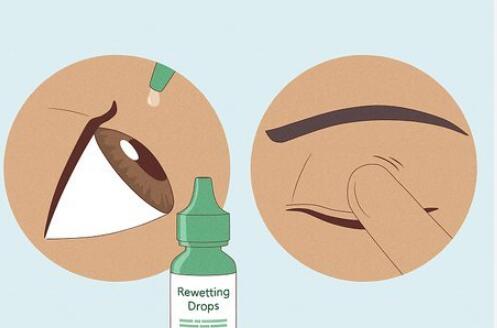Wearing contact lenses provides convenience and comfort, but occasionally, they can cause confusion, especially if you are unsure whether the lens is still in your eye. This uncertainty can lead to discomfort, irritation, or even panic. Contact lenses may become displaced, stuck under the eyelid, or even fall out without you noticing.
1. Common Signs That Your Contact Lens Is Still in Your Eye
a. Blurred Vision
One of the most immediate indicators that your lens is still in place is your vision clarity. If your sight remains sharp and clear, chances are your contact lens is still in your eye. However, if you experience sudden blurriness or distortion, the lens might have shifted or dislodged.
b. Feeling of a Foreign Object
If you have a persistent sensation of something in your eye, this may indicate that the lens is either in place but irritated or misplaced, possibly stuck under the eyelid.
c. Redness and Irritation
A misplaced or folded lens can cause discomfort, leading to redness, watering, and irritation. This may occur if the lens has moved to an area where it is not providing proper coverage to the cornea.
d. Excessive Tearing
If your eye is watering excessively, it could be a reaction to a lens being misplaced. Tears help flush out foreign objects, including a displaced contact lens.
2. How to Check if Your Contact Lens Is Still in Your Eye
a. Use a Mirror and Good Lighting
Stand in front of a well-lit mirror.
Pull down your lower eyelid and look upwards.
Lift your upper eyelid and look downward.
Check for any visible lens edges or distortions on the cornea.
b. Blink and Move Your Eye Around
Sometimes, blinking a few times can reposition the lens.
Look in different directions to see if you can detect movement of the lens.
c. Feel for the Lens with Clean Fingers
Wash your hands thoroughly with soap and water.
Gently touch the surface of your eye with a clean, dry fingertip.
A contact lens will feel smooth and slightly slippery.
d. Use a Saline Solution or Rewetting Drops
Apply rewetting drops to your eye and blink several times.
If the lens is in your eye, the added moisture may make it more comfortable and visible.
3. What to Do If the Lens Is Dislodged or Stuck
a. If the Lens Is Folded or Off-Center
Close your eye and gently massage the eyelid to move the lens back into place.
Use rewetting drops to lubricate the eye.
Look in different directions to encourage the lens to move back to the center.
b. If the Lens Is Under the Eyelid
Look down and gently pull your upper eyelid outward.
Roll your eye around to encourage the lens to slide back.
If necessary, flush your eye with saline solution to help dislodge it.
c. If You Cannot Find the Lens
Recheck your surroundings, including your clothing or sink.
If symptoms persist, assume the lens might still be in your eye and consult an eye care professional.
4. Preventing Contact Lens Issues
a. Follow Proper Lens Care Practices
Always wash your hands before handling lenses.
Use the recommended lens solution for cleaning and storing.
Never sleep in lenses unless prescribed by an eye doctor.
b. Be Mindful When Removing Lenses
Always double-check that you have removed both lenses before discarding them.
Store removed lenses properly in a clean lens case.
c. Use High-Quality, Well-Fitting Lenses
Ensure your prescription is up to date.
Avoid using old or damaged lenses.
Visit an optometrist for regular check-ups.
